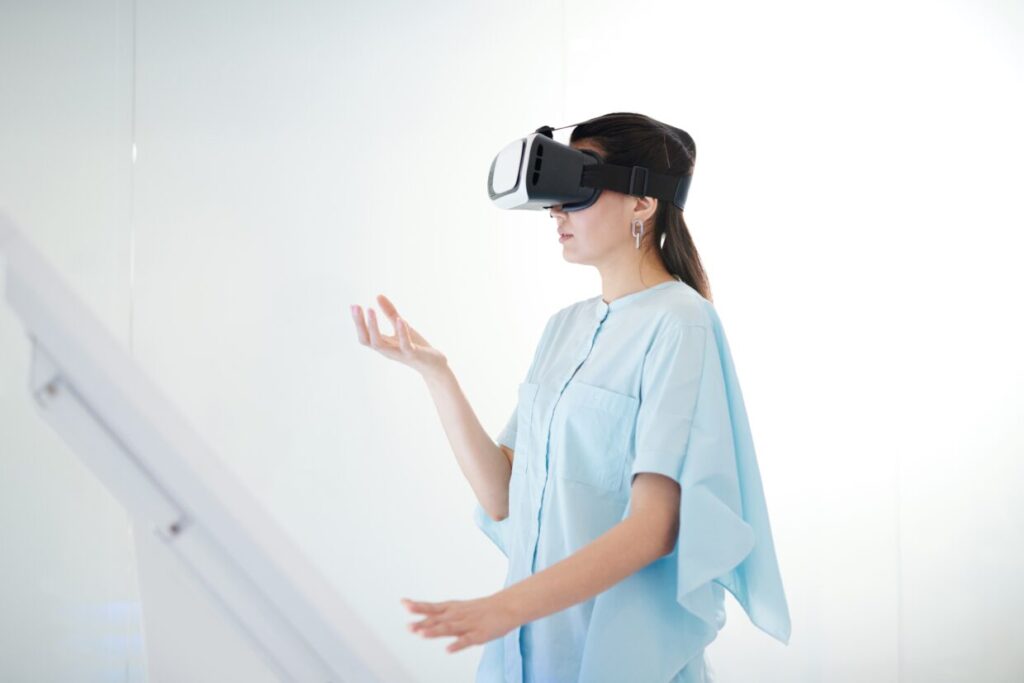Fighting Kinesiophobia with Virtual Reality
During rehabilitation, pain management is a major challenge for patients and health professionals....

Today, virtual reality is known for immersing video game players in a fictional world, but it also has other benefits. It has been shown that virtual reality can have therapeutic uses by helping patients overcome pain during rehabilitation.
In humans, pain requires attention to exist and to be felt. The sensation of pain is a sensory phenomenon transmitted to the brain by neurons, by sending an electrical signal.
It is detected by nociceptive receptors located throughout our body (skin, muscles, joints, organs...). If our attention is diverted and focused on something else, our brain will detect the sensation of pain late and will push back the nervous message. The pain is then delayed and the attention is not focused on it.
Thanks to the immersion of the patient in a fictional world, his concentration will be based on his virtual experience, and the nervous messages will be different. He is immersed in another universe, and ignores the real world. This allows him to divert his attention, and thus not to concentrate on the pain he may feel.
Virtual reality allows health professionals such as occupational therapists or physiotherapists to perform rehabilitation exercises in different universes, adapted to the needs and abilities of the patient. Distraction is a technique to reduce unpleasant sensations, or states of stress and/or anxiety.
Be careful, virtual reality does not interrupt pain signals and does not cure patients, but it does bring them certain benefits: it will modify their perception through attention, emotion, concentration and other senses. Pain is temporarily relieved through a virtual experience.
Thanks to VR, patients can fight against kinesiophobia, which can block them during their rehabilitation session. Patients do not dare to perform movements and put limits on themselves for fear of aggravating the injury and experiencing even more pain. Virtual reality helps patients to make movements that they do not normally do during rehabilitation: this new therapy improves well-being, complementary to conventional rehabilitation.
Virtual reality is taking an important place in revolutionizing care in the health sector. Many patients with different pathologies and chronic pain are concerned by this immersive experience in order to improve physiotherapy: we find targeted patients with hemiplegia, persistent chronic pain such as complex regional pain syndrome, post-stroke patients and cerebral palsy, patients with dyspraxia and myopathy, but also patients with multiple sclerosis and severe burns. VR concerns a large number of patients, whether they are children, adolescents or adults.
The application of virtual reality mirror therapy is a good example to cite for patients with phantom limb pain, as it allows the brain to be visually deceived about the injured limb.
A study based on functional magnetic resonance imaging of pain patients who used virtual reality demonstrated a reduction of more than 50% in pain-related brain activity in different areas of the brain. Virtual reality and opioid analgesics have similar results on pain reduction.
(Source: Hoffman HG, Richards TL, Coda B, Bills AR, Blough D, Richards AL, et al. Modulation of thermal pain-related brain activity with virtual reality: evidence from fMRI. Neuroreport).
Would you like to test virtual reality with your patients and see the benefits that this technology brings them? Do not hesitate to contact us to organize a demonstration in your center or practice.
During rehabilitation, pain management is a major challenge for patients and health professionals....
We are delighted to announce our participation in the Rééduca 2023 trade show! This event for the rehabilitation and...
The entire H'ability team is proud to unveil version 2.0 of its interface dedicated to rehabilitation. Fruit...
On June 15 and 16, the H'ability team had the honor of taking part in the 2023 edition of the...
During rehabilitation, pain management is a major challenge for patients and health professionals....
During rehabilitation, pain management is a major challenge for patients and health professionals....